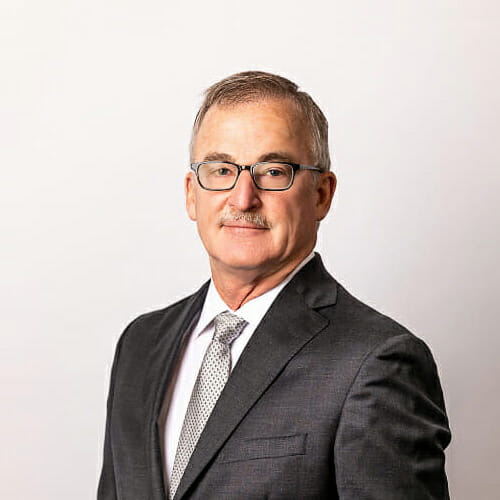$48.5
Million
Truck Accident Case
We took more than 60 depositions in five different states. Because of Stephenson’s tireless advocacy, shortly before the trial was to commence, the defendants settled the case for $48.5 million.
Sleep Apnea & Truck Driver Fatigue in Indiana
Driving while fatigued or drowsy is an ever-present risk for a commercial driver. Long days on the road, combined with less-than-ideal sleeping conditions and deadline pressures, mean that accidents caused by driver fatigue are a danger to all on the road. Anyone who has ever taken a multi-day road trip knows how you can become progressively more tired each day.
Many reasons for driver fatigue are caused by behaviors at least partially under a driver’s control, such as not attempting to obtain sufficient sleep, not taking rest breaks, or choosing to violate the hours-of-service requirements. But one big reason for driver fatigue is medical, and it is not under a driver’s control. It’s called obstructive sleep apnea (OSA) and, while it is treatable, it often goes undiscovered or untreated.
Two Deadly Crashes
Modern large trucks can weigh as much as 80,000 pounds, and, in certain cases, even more. An out-of-control big rig with a sleeping driver is deadly. The six-vehicle crash on the New Jersey Turnpike in 2014 that killed comedian James McNair and critically injured comedian-actor Tracy Morgan along with two others was caused by a truck driver who had not slept in over 28 hours. It’s estimated he was traveling 65 mph in a 45 mph zone.
In an Ohio crash involving a driver with sleep apnea, a man who was pulling three trailers hit six vehicles, killing one person nearly instantly and critically injuring two others. Records proved that the driver had a history of sleep apnea and had been involved in previous accidents.
Facts about Truck Driver Fatigue
Driver fatigue contributes to approximately 13 percent of tractor-trailer crashes, or more than 1 in 8, according to the Federal Motor Carrier Safety Administration’s (FMCSA) Large Truck Crash Causation Study. During 2015, the numbers indicate that:
- 3,598 fatal large-truck crashes occurred.
- Roughly 83,000 injury-producing large-truck crashes occurred.
- Some form of driver error, of which fatigue is one, was a contributing factor in one-third of large-truck crashes.
Obstructive sleep apnea, which keeps you chronically sleep-deprived, is considered a special risk among large-truck drivers. FMCSA estimates that 28 percent of all commercial drivers have some form of OSA, with around 9 percent, or one driver in 11, having a moderate-to-severe case. An untreated driver suffering from OSA with moderate-to-severe sleep apnea is disqualified from driving.
Those with OSA are also prone to a phenomenon called microsleeps, which exacerbates the problem. In simulator studies, sleep-deprived drivers had as many as 140 microsleeps an hour, with each episode lasting an average of eight seconds. The number of simulator “crashes” rose with the number of microsleeps recorded.
OSA and Microsleeps
Obstructive sleep apnea is a breathing disorder in which neck muscles relax, causing a partial or complete blockage of airflow, stopping the breathing process. When airflow is cut off, the sleeper abruptly awakens but usually falls back to sleep. They may not even recall waking up. Those with severe OSA can have hundreds of episodes a night, creating constant fatigue and daytime microsleeps.
A microsleep is simply an extremely short episode of sleep that happens involuntarily because the body is extremely fatigued. During the microsleep time period, which can last as long as 30 seconds, the person is truly asleep and not in control of anything. If microsleeps occur while a driver is behind the wheel, the potential for fatal accidents is significant. Microsleeps and OSA are firmly linked.
OSA Risk Factors and Treatment
OSA is twice as common in men as in women. Of the following risk factors, the more of them that you have, the more likely it is that you will develop sleep apnea:
- Age 40 or over
- A large neck (over 17 inches in males, 16 inches in females)
- A body mass index (BMI) of 28 or greater
- Having a small upper airway (measured through a test)
- A small jaw or recessed chin
- Smoking cigarettes
- Drinking alcohol regularly
- A family history of OSA
- Having treated or untreated high blood pressure (hypertension)
- Having treated or untreated Type 2 diabetes
- Having treated or untreated hypothyroidism.
Those with OSA often have morning headaches, experience gasping or a feeling of choking that wakes them up, are told by others that they snore loudly, feel irritable or depressed, and have extreme daytime sleepiness.
OSA can be treated. It is diagnosed by overnight testing in a sleep center. Treatment is generally the regular use of a continuous positive airway pressure (CPAP) machine while sleeping. The flow of air from the CPAP mask prevents the throat from closing, enabling breathing to continue unimpeded. The diagnosis and treatment of OSA can be expensive—over $1,200 dollars, according to one study.
However, it is essential for truck and other commercial drivers to be treated. Even if you have a severe case of OSA, if you are successfully treated, you can still drive for a living. Those who suffer from untreated OSA are five times more likely to crash than those who do not have OSA. Such findings indicate that screening commercial drivers for OSA, and requiring them to undergo treatment, should be mandatory if they intend to drive commercial vehicles for a living.
Is Anything Being Done about the Problem?
In March, 2016, FMCSA and the Federal Railroad Administration had proposed a rule that would have required testing for OSA. However, in August, 2017, these two agencies withdrew the proposed rule they published. Though they have characterized OSA as an “ongoing concern,” the two agencies now claim that the problem of OSA and safety can be dealt with using existing rules and programs.
The National Transportation Safety Board (NTSB) was not pleased with such backtracking on the OSA issue. The agency’s media relations chief, Christopher O’Neil, commented, “Medical fitness and fatigue, two of the NTSB’s 10 Most Wanted List of Transportation Safety Improvements for 2017–2018, are tied to obstructive sleep apnea. The need for this rulemaking is well documented.”
We can only hope that the existing programs and regulations for OSA will be enough to prevent tragedies such as the ones we have told you about.

 Mike Stephenson has 40 years of experience and is a trusted advisor to many individuals and companies. His current practice is dominated by civil litigation in state and federal courts. He focuses much of his time on handling catastrophic injuries caused by all types of accidents, including motor vehicle, trucking, workplace injuries, product liability, and fire, just to name a few. He also works extensively in construction accidents. [
Mike Stephenson has 40 years of experience and is a trusted advisor to many individuals and companies. His current practice is dominated by civil litigation in state and federal courts. He focuses much of his time on handling catastrophic injuries caused by all types of accidents, including motor vehicle, trucking, workplace injuries, product liability, and fire, just to name a few. He also works extensively in construction accidents. [ 


